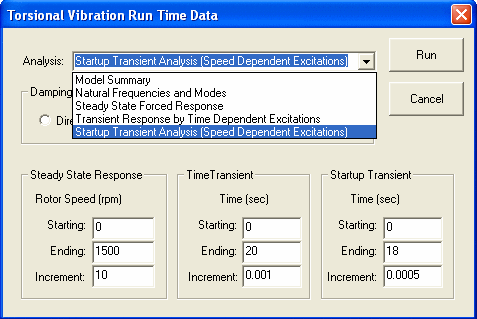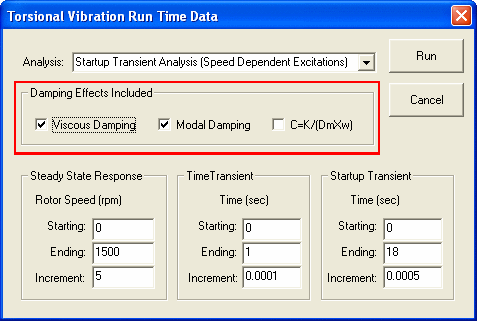
To perform the torsional vibration analysis, the rot-bearing data file (.rot) must be built and opened. From the Main Menu, select Analysis and Torsional Vibration as shown below.

The run time data screen for the Torsional Vibration Analysis is shown below:

The inputs are described:
1. Analysis:
Select one analysis at a time as shown below. Once the specific analysis option is selected, the corresponding data are also required.

2. Damping Model:
You can select the damping model to be used in the analysis. Three types of damping model can be included in the analysis: Viscous damping, Modal damping, and Frequency dependent damping. Viscous damping used widely in the lateral vibration analysis is not commonly available in the torsional analysis. Modal damping is widely used in torsional analysis. Frequency dependent damping is commonly used in the rubber type coupling and can only be used in the forced response. Details on the modal damping model are explained in the Modal Damping

For a geared system (multi-branch system), one shaft (normally the shaft number 1) is selected to be the reference shaft and all other shaft properties are converted into the equivalent properties referenced to this reference shaft. The conversion between the actual (physical) system and equivalent (mathematical) system for a geared system is listed below:

See also:
Damped and Undamped Natural Frequencies and Modes Calculation
Steady State Forced Response Analysis
Transient Analysis (Time Dependent Excitations)
Startup Transient Analysis (Speed Dependent Excitations)
Copyright © 2014-2017